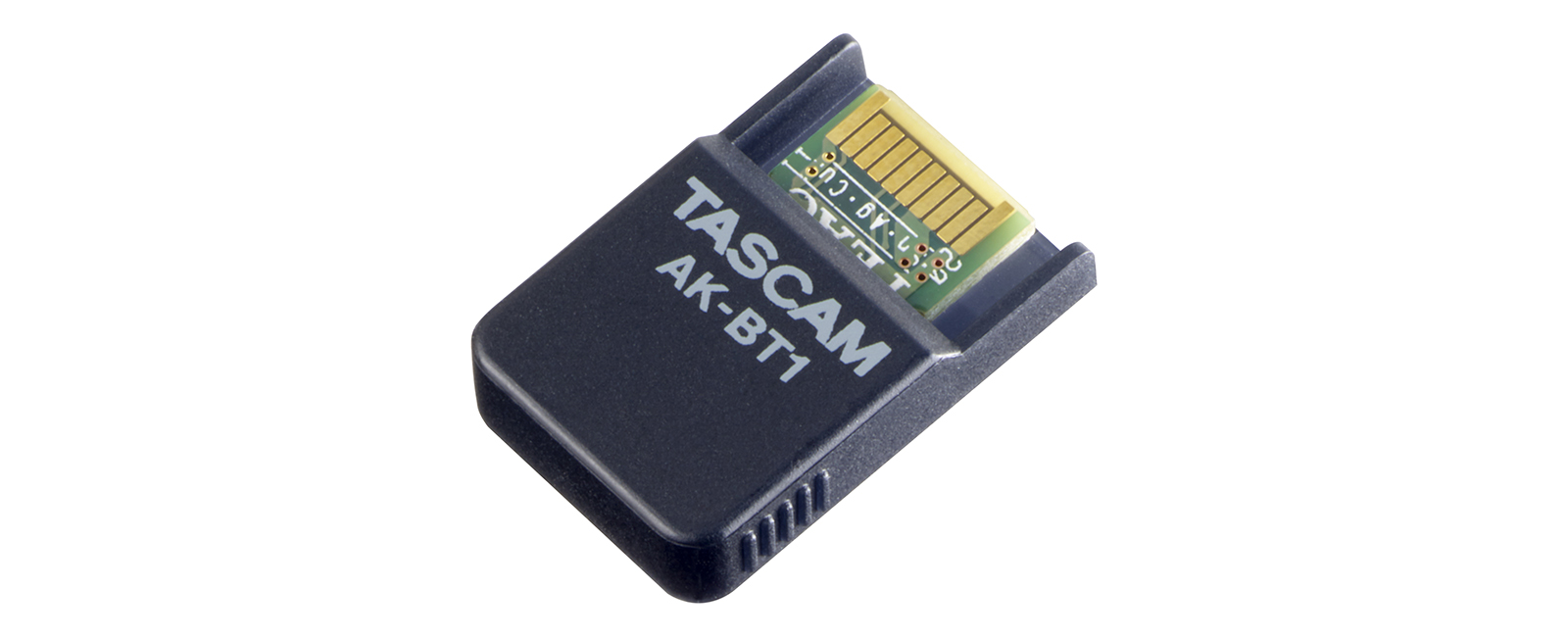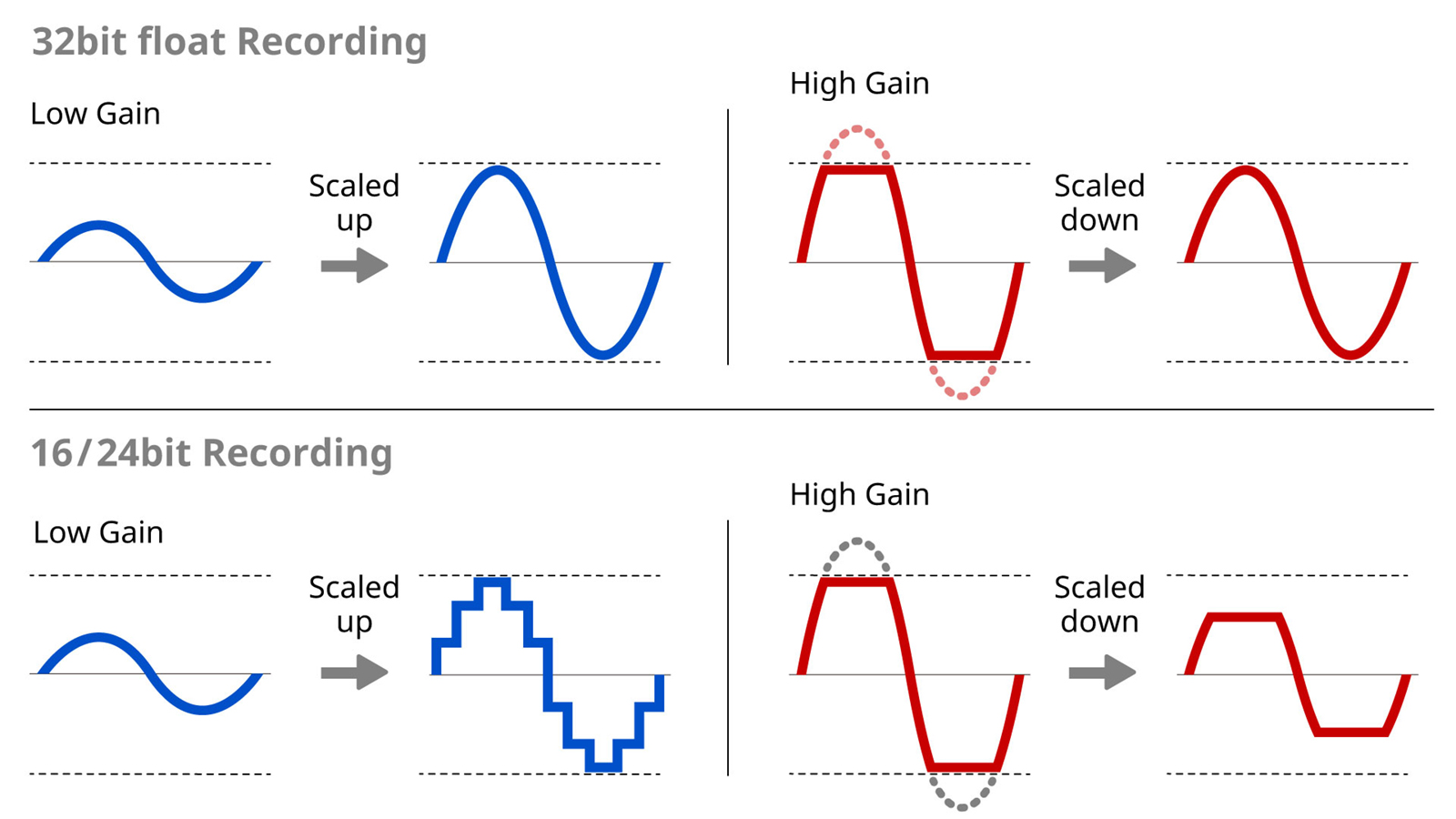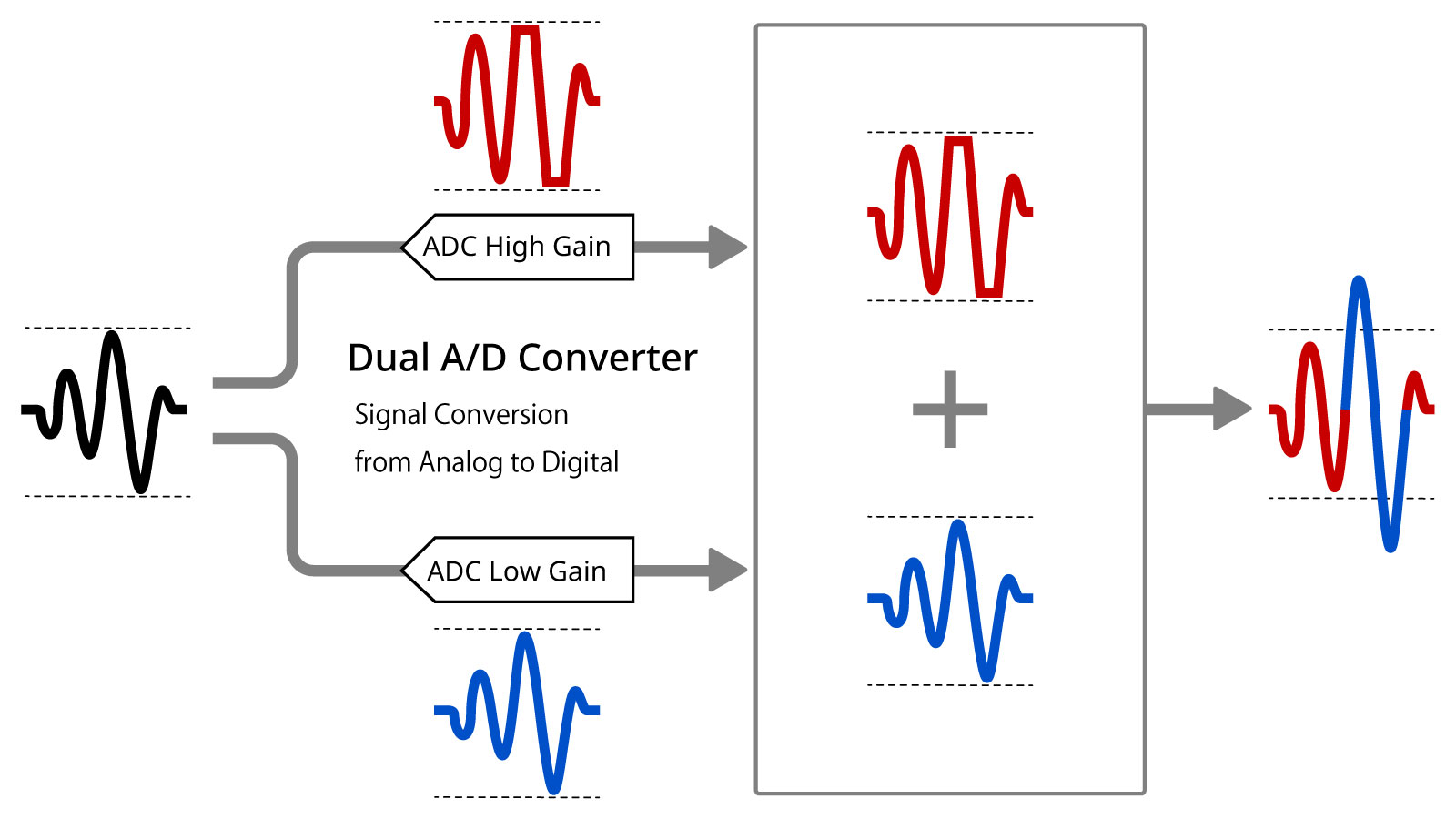TASCAM Portacapture X6 32-Bit Float Portable Audio Recorder
Eligibility: Students, Faculty/Staff, Schools
Never miss a moment. Capture audio anywhere with the Portacapture X6. The intuitive app-like operations on its large color screen make it easy to record or sweeten up your audio in post. Record using the X6’s dual built-in microphones or plug in your own mics to its 2 XLR inputs. The recording quality on the Portacapture X6 will be your secret weapon. Its 96 kHz/32-bit float recording technology means that you can capture audio softer or louder than ideal, assuring that you will never miss that moment.
Features include:
App-Like Operation

Quickly access your settings and adjustments on the Portacapture X6's large (2.4") color touchscreen. With the easy-to-navigate interface and helpful tools, you are just a few taps from the perfect setting for your needs. Use the Launcher to select from podcast, music, interviews, field recording and 6-track multi-track recording. Start fast, start right and get exactly what you need.

The internal Recording app icons and descriptions:
- Manual: This is the basic app of the unit. Multitrack recording of up to six channels is possible.
- Podcast: This is good for recording podcasts with up to two people.
- Field: This recording app is good for recording outdoors.
- Voice: This recording app is good for capturing interviews, dictation and meetings
- Music: This recording app is good for easily capturing instrumental and vocal performances.
- ASMR: The screen visual effect changes in response to the input sound.
Audio for Video Production
When shooting a video, you want to be able to focus on your video production and not worry about your audio. The Portacapture X6 was built with video production in mind. The workflow, presets and user-saved settings save you countless steps. The X6 has your back with its 96 kHz/32-bit float recording technology. Not only does this mean you will have the highest quality audio, but you will have a dynamic range that allows you to overcome those less-than-ideal realities that can often occur on a shoot. The X6 even gives you a time-code sync option* via Bluetooth® (with optional AK-BT1) allowing you to align your audio with your video, even when you have no audio on your camera. Upgrade your audio and reduce your worries with your own Portacapture X6.
* - Support from firmware V1.10
Capture Your way

The Portacapture X6 is ready to record with a few quick taps. The internal high-quality stereo microphones can instantly rotate from A-B to a true X-Y mic pattern to allow for dialog or spatial music recording.
Have your own mics? Use those thanks to the two included XLR inputs or line level inputs. The mic preamplifiers are TASCAM HDDA (High Definition Discrete Architecture) - providing ultra-low noise and clean transparent audio based on over 50 years of TASCAM know-how.
Record 6 tracks (4 track + 2 mix) simultaneously and even use the X6 as your 6-in/2-out USB audio interface to connect to your computer.
Capture Every Bit
It would be great if every time you need to capture audio, everything is perfect. Not too loud, not too soft. Of course that is not the reality for most of us. Sometimes the voice or sound that you need to capture will be really soft and in other cases it is blasting. Even in these extremes, you are expected to capture the sound and deliver well- finished audio. The 32-bit float point recording technology in the Portacapture X6 gives you a much lower floor and higher ceiling to achieve audio success. You could use another audio recorder and hope not to need this best-in-class recording technology, but should you?
Control the X6 from Your Phone
In those cases where you want to put your audio recorder in one place and operate it from another, the X6 has you covered. With the AK-BT1 Bluetooth® adapter (sold separately) and free Portacapture Control app, it's easy to remote control your X6 wirelessly from your smartphone or tablet. Imagine the possibilities!
Ready-to-Publish Audio Anywhere
With the Portacapture X6's your audio will be ready to share. Built-in signal processing, including a compressor, limiter, high pass filter, EQ, and reverb, add that studio polish. Whether you need to tame the wind when recording outside or want to add the ambiance of reverb to your vocals, the X6 has you covered. From smoothing out your input to preventing extreme peaks or eliminating plosives in dialog, you can count on the Portacapture X6.
Your Virtual Audio Engineer
Getting your settings just right for your recording goals can be overwhelming, but not on the Portacapture X6. Select from the pre-perfected settings like Voice, Podcast, Music Recording, ASMR, and Field Recording. Just select the one that applies and start to record. Each setting was carefully tuned by TASCAM audio engineers for the defined use case. They set it all up, so you don't have to.
Features at a Glance:
- Enjoy intuitive app-like controls on the X6, all using the large 2.4-inch touchscreen. Easy-to-use recording, pre-production and postproduction capabilities are just a touch away.
- Capture using up to 96 kHz, 32-bit float recording
- Record 6 tracks (4 track + 2 mix) simultaneously
- Easy-to-use recording pre-sets: Select from music, podcast, interviews, field recording and 6-track multi-track for the ideal recording setup for your needs.
- 2 XLR inputs and dual built-in mics with switchable AB/true-XY patterns
- The 2 XLR input terminals are compatible with phantom power (24V/48V) to support recordings with multiple mic/line inputs
- Undistorted recording processing enables safe recording without lowering the S/N ratio with 32-bit float processing
- Equipped with a 6-in/2-out USB audio interface function
- Wireless remote control from smartphones/tablets is possible with the optional AK-BT1 Bluetooth® adapter (sold separately). Timecode sync is also possible via Bluetooth® (*Timecode sync supported from V1.10 firmware update)
BONUS! Option Add the Tascam AK-BT1 Bluetooth Adapter for Only $35 - Regularly $39.99

AK-BT1 is a Bluetooth adapter that enables wireless remote control for compatible TASCAM products. When used with the product control app on a smart phone or tablet, remote control and other available functionality is possible.
What is 32-Bit Float Recording?
Digital recording technology has come a long way, and at the forefront of recording tech you'll find 32- bit floating point recorders. From a production standpoint, advancing from 16-bit recording to 24-bit recording makes a big difference in fidelity and overall audio quality. But why 32-bit float recording? What is 32-bit float recording anyway, and will it really make much of a difference compared to 24-bit recording? Let's take a look at what 32-bit float recording is, how it works in practice, and how your audio productions will benefit from it.
Bit Depth & Why It Matters
The simplest way to describe bit depth (in terms of recording audio) is that it represents the dynamic range you can capture without distorting the audio. This determines how loud of a sound you can record without introducing digital clipping, for sure, but it also determines how much higher your recordings sit above the always-present noise floor. In other words, recording at higher bit depths not only allows you to record louder sounds without risk of distortion, it also means your recordings will have a lower audible noise floor. For comparison, let's look at the dynamic range that different bit depths allow for:
- 16-bit: approximately 96dB of dynamic range
- 24-bit: approximately 144dB of dynamic range
- 32-bit: approximately 1680dB of dynamic range
While there are plenty of recording scenarios that can generate levels above 96dB (close-miking a snare drum comes to mind), it would seem that the 144dB dynamic range allowed by 24-bit recording would be plenty to capture any sound you could possibly encounter. So why 32-bit float recording? What could possibly be so loud that you'd need 32-bit float dynamic range? The real benefit of 32-bit float recording actually has to do with its lower noise floor, and how that can greatly benefit your workflow as a recording engineer, videographer, or any other type of audio professional.
Dynamic Range and The Human Voice
To understand the benefit of 32-bit float recording, let us make an example with one of the most dynamic sound sources in the world: the human voice. At a whisper, a voice may only reach 20-30dB, while a full scream can reach upwards of 120dB at certain frequencies. That's a huge range to capture, and makes vocal recording one of the more challenging aspects of music production. Even when recording spoken word for videography, our natural speaking patterns can cover a wide dynamic range. And while the voice's upper limit of around 120dB falls within the 144dB range of a 24-bit recorder, that doesn't tell the whole story. The reality is that even when recording 24-bit or 16-bit audio, you need to optimize your recorder's input level to maximize fidelity. If you set the input gain too low, you'll capture loud screams without distortion, but quieter whispers will barely be above the noise floor. Alternatively, if you set your input levels too high, quieter whispers will be intelligible and well above the noise floor, but you're always at risk of distorting your recording if things get loud.
But let's say you've successfully recorded a passionate speaker without any digital clipping, and you're ready to continue with your production. In your DAW or NLE software, you will need to make some gain adjustments to softer-spoken parts of the dialogue. Even with a 24-bit audio file, increasing the level of a quiet section can quickly introduce unwanted noise, because it was recorded too close to the noise floor. You may also notice that the quieter section's overall audio quality has less fidelity than audio that was recorded at an appropriate level, even when you match their volume. If you recorded at a higher input level, you would have risked digital distortion when things got loud, but now you are unable to increase the level of soft sounds without introducing noise. This is where 32-bit float recording comes to save the day.
Why 32-Bit Float Recording
With a 32-bit float recorder like the TASCAM Portacapture X6 or Portacapture X8, you can hit record without ever worrying about digital clipping. In fact, you don't even need to set an input level with a 32-bit float recorder — the huge dynamic range that 32-bit float offers means your audio is always captured well above the noise floor, and also makes it basically impossible to distort due to high input levels.
Audio professionals are used to optimizing input levels at every link in the signal chain, and the fact that you don't need to adjust input levels for 32-bit float recording can sound too good to be true. The reality is, with 32-bit float recording you can turn on your recorder, hit record, and be 100% confident that you'll be capturing high-fidelity, low-noise audio, without ever adjusting your input level.
After you've recorded audio in 32-bit float format, any quiet sections of your recording can be increased in volume in your DAW or NLE software without adding any noticeable noise. And loud sections that would have clipped a 24-bit or 16-bit recorder can be reduced in level, without any digital distortion or clipping. Thanks to 32-bit float recording, you were able to set up and record without ever worrying about signal levels, and you did not need to scrap any audio due to noise or clipping afterwards.

How 32-Bit Float Recording Works
The reason 32-bit float recorders like TASCAM's Portacapture Series are able to capture such a wide dynamic range has to do with the analog-to-digital conversion (ADC) stage. With 16-bit and 24-bit recorders, a single ADC handles the entire dynamic range, and you need to set your input level so that audio hopefully stays within that range. Audio that is too loud will be clipped at the top of its waveform, creating harsh-sounding digital distortion that will likely mean you need to scrap the audio. Audio that is too quiet cannot be raised in volume without also bringing up excessive noise, and lacks fidelity if increased in level anyway.
In a 32-bit float recorder, you have two ADCs working in tandem to create a single audio file. One “low gain” ADC is optimized for high-level audio, and the other “high gain” ADC is optimized for low-level audio. If the high gain ADC clips due to loud sounds, the low gain ADC does not. And if sounds are too quiet for the low gain ADC to capture clearly above its noise floor, the high gain ADC still has plenty of headroom above its noise floor. Said another way, the low-level ADC handles the quieter sections, and the high-level ADC handles loud sections.
The resulting 32-bit audio file will have no digital clipping caused by loud sounds, and quieter sections are still well above the noise floor. In your DAW or NLE software, loud sections of a 32-bit float audio file may visually appear to be clipped, but as you lower their gain to sit well in your production you'll hear that there is actually no distortion, and you'll see that the actual waveform is smooth and not chopped off at the top. Likewise, you can isolate quiet sections and raise their gain to increase their volume without bringing up excessive noise, and you'll notice they sound crisp and clear as if you had recorded them at the “appropriate” input level. If you've spent long hours fine-tuning input levels, struggling to salvage clipped audio, and trying to remove noise from low-level audio, working with 32- bit float audio recordings can indeed seem like magic.

Specifications:
- Recording Media: microSD cards (64MB - 2GB), microSDHC cards (4GB - 32GB), microSDXC cards (48GB - 512GB)
*Class 10 or higher required. - Recording / Playback Formats:
- WAV (BWF): 44.1k/48k/96kHz, 16/24-bit, 32-bit float
- MP3: 44.1k/48kHz, 128k/192k/256k/320kbps
- Number of Channels:
- Input Channels: 4 channels maximum
- Output Channels: 6 tracks maximum (4 tracks, stereo mix)
- Input Jacks 3-4(when INPUT SELECT set to MIC)
- Connectors: XLR-3-31 equivalent (1: GND, 2: HOT, 3: COLD)
Note: supports phantom power only when MIC input selected - Input Impedance: 2.2kΩ or higher
- Maximum Input Level: +2dBV
- Minimum Input Level: -75dBV
- Connectors: XLR-3-31 equivalent (1: GND, 2: HOT, 3: COLD)
- Input Jacks 3-4 (when INPUT SELECT set to LINE)
- Connectors: XLR-3-31 equivalent (1: GND, 2: HOT, 3: COLD)
- Inputimpedance: 9kΩ or higher
- Nominal Input Level: +4dBu(GAIN setting at minimum)
- Maximum Input Level: +24dBu
- Minimum Input Level: -53dBu
- Line Input (Unbalanced): MIC/EXT IN jack (can provide plugin power)
- Connectors: 3.5mm (1/8") stereo mini jack
- Inputimpedance: 10 kΩ or higher (when plug-in power is off ); 1.8 kΩ or higher (when plug-in power is on)
- Nominal Input Level: -20 dBV(GAIN setting at minimum)
- Maximum Input Level: 0 dBV
- Minimum Input Level: 67 dBV
Analog Output Ratings
- Line Output (Unbalanced)
- Connectors: 3.5mm (1/8") stereo mini jack
- Output Impedance: 210Ω
- Nominal Output Level: -14dBV
- Maximum Output Level: +6 dBV
- Headphone Output (Headphone Jack)
- Connectors: 3.5mm (1/8") stereo mini jack
- Maximum Output: 45mW + 45mW (THD+N 0.1% or less, into 32 Ω load)
- Built-In Speaker: 0.4 W (mono)
USB
- Port: USB Type-C
- Transfer Mode: USB 2.0 Hi-Speed
- Device Classes: mass storage,USB audio 2.0 (USB class compliant)
USB Audio
- Sampling Frequencies: 44.1, 48, 96 kHz
- Quantization Bit Depth: 24-bit
- Number of Input Channels: 6 (output from unit)
- Number of Output Channels: 2 (input to unit)
Bluetooth Device Connector
- For Bluetooth adapter (AK-BT1) only
Portacapture Control
- iOS/iPad iOS Devices: iOS 16/iPadOS 16,iOS 15/iPadOS 15,iOS 14/iPadOS 14
- Android Devices: Android 11,Android 10
Note: Compatibility has been confirmed, but this does not guarantee operation with all devices.
Power
- 4 AA batteries (Alkaline, Ni-MH or Lithium-ion)
- USB bus power from a computer
- TASCAM PS-P520U AC adapter (sold separately)
Dimensions
75 × 174.3 × 37.2 mm (W× H× D, excluding protrusions) Weight
- 365/265g (with/without batteries)
What's Included
- Portacapture X6 × 1
- AA alkaline batteries × 4
- Owner's Manual (including warranty) × 1
- TASCAM ID registration guide × 1












